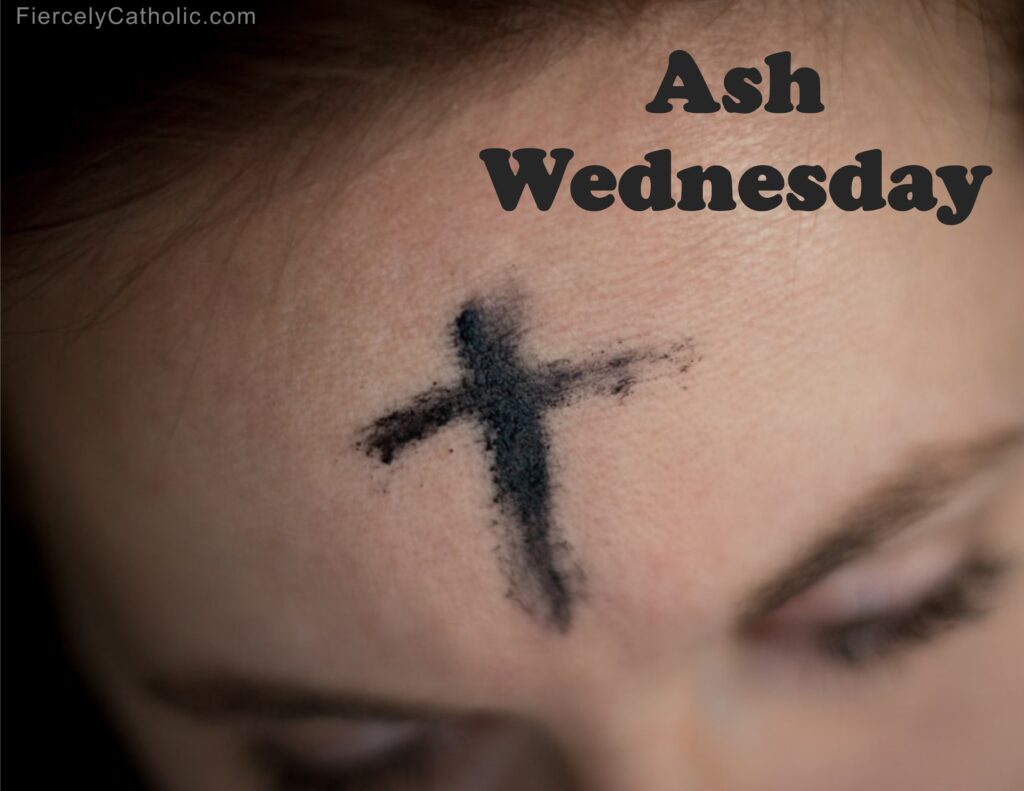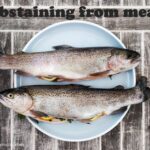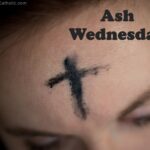
Lent begins on Ash Wednesday, a day when Catholics are marked with ashes on their foreheads.
Symbolizing the dust that man was created from and will return to, ashes serve as a reminder of man’s mortality and his need to repent from sin. The ashes also call to mind God’s mercy and point toward the Resurrection.
As the priest crosses the person’s forehead with ashes, he says, “Remember that you are dust, and to dust you shall return.” He may also say, “Repent and believe in the Gospel.”
The ashes on this first day of Lent come from burned and blessed palm from the last Sunday of the previous season of Lent, Palm Sunday.
Though not a Holy Day of Obligation, Ash Wednesday is a day of penitential prayer and fasting. Ashes should be received during Mass. Non-Catholics may also receive ashes.
Catholics are obligated to to abstain from eating meat and to fast by eating fewer and smaller meals on Ash Wednesday.
Ash Wednesday marks the beginning of Lent:
The beginning of a special season for Christians:
Ash Wednesday falls on a different date each year:
In the sweat of your face you shall eat bread till you return to the ground, for out of it you were taken; you are dust, and to dust you shall return.
Genesis 2: 19
Only the love of God can sustain dust as a living being:
The somber future and triumphant past of the ashes:
Why does the Church place ashes on our heads today? Why does it remind us of death? Death which is the effect of sin! Why? To prepare ourselves for Christ’s Passover. To the paschal mystery of the Redeemer of the world. Easter means what we profess in the “Creed”: “On the third day he rose again”! Yes. Today it is necessary to listen to the “you are dust and to dust you will return” of Ash Wednesday, so that the definitive truth of the Gospel opens up before us. The Truth About the Resurrection: Believe the Gospel. In order to fully believe the Gospel, with all the truth of our mortal existence, it is necessary that, on the threshold of Lent, this perspective opens up before us. We are called to participate in the resurrection of Christ. To make this appeal resonate within us with all its force, at the beginning of the Lenten period we need to realize what death is: “. . .You are dust . . . Get converted . . . Believe in the Gospel !”
Pope John Paul II, Homily, 21 February 1996
Ashes signify mortality and repentance:
We are marked with ashes in the shape of the Cross:
Death is the end of earthly life. Our lives are measured by time, in the course of which we change, grow old and, as with all living beings on earth, death seems like the normal end of life. That aspect of death lends urgency to our lives: remembering our mortality helps us realize that we have only a limited time in which to bring our lives to fulfillment: Remember also your Creator in the days of your youth, . . . before the dust returns to the earth as it was, and the spirit returns to God who gave it.
Catechism of the Catholic Church 1007
Ash Wednesday sets the stage for what comes next:
Ash Wednesday confronts the fear of death:
The Truth, Goodness, and Beauty of the Catholic Church
Finding fuller meaning in the Catholic Church:
Share this page with friends and family to start a conversation about your faith.
Don’t miss a post. Learn more about the Catholic Church and strengthen your Catholic faith.
Find more Fiercely Catholic video issues here.
Subscribe here.


